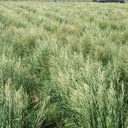Bile acid metabolism and plasma protein turnover in Crohn's disease.
Klíčová slova
Abstraktní
Postprandial duodenal bile acids, intestinal protein loss, and albumin and IgG turnover were studied in 19 non-operated patients with Crohn's disease. A lesion of the terminal ileum was present in 18 of 19 patients, either alone or associated with regional colitis. Identical bile acid studies were made in a control group of 20 patients with chronic diarrhoea of undetermined origin. Duodenal bile acid concentration was decreased in 9 of 19 patients with Crohn's disease, and in 5 of 20 patients with unexplained diarrhoea. The glycine/taurine-ratio was increased in 8 of 17 patients with Crohn's disease, but in only one of the 20 control patients. Abnormal intestinal protein loss was present in 13 of 14 patients with Crohn's disease. The fractional catabolic rate of albumin and IgG was increased in all 17 cases of Crohn's disease studied, except the patient with no protein loss. A statistically significant and positive correlation was observed between glycine/taurine-ratio and fractional catabolic rate of both albumin and IgG. No patient with Crohn's disease harboured an abnormal bacterial flora in the proximal small intestine. It is concluded that, in the absence of abnormal bacterial flora in the proximal jejunum, the glycine/taurine-ratio is more valuable as an indicator of terminal ileopathy than postprandial duodenal bile acid concentration in nonoperated patients with terminal ileitis. Abnormal intestinal protein loss and increased catabolic rate of albumin and IgG are practically always present in active Crohn's disease and are strong evidence of an organic gastrointestinal lesion in patients with normal radiographic findings.


